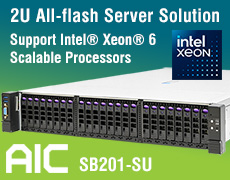R&D: X-pSRAM, Photonic SRAM with Embedded XOR Logic for Ultra-Fast In-Memory Computing
Work proposes novel differential photonic static random access memory (pSRAM) bitcell that facilitates electro-optic data storage while enabling ultra-fast in-memory Boolean XOR computation.
This is a Press Release edited by StorageNewsletter.com on July 31, 2025 at 2:00 pmarXiv has published an article written by Md Abdullah-Al Kaiser, University of Wisconsin–Madison, WI, USA, Sugeet Sunder, Ajey P. Jacob, USC Information Sciences Institute, CA, USA, and Akhilesh R. Jaiswal, University of Wisconsin–Madison, WI, USA.
Abstract: “Traditional von Neumann architectures suffer from fundamental bottlenecks due to continuous data movement between memory and processing units, a challenge that worsens with technology scaling as electrical interconnect delays become more significant. These limitations impede the performance and energy efficiency required for modern data-intensive applications. In contrast, photonic in-memory computing presents a promising alternative by harnessing the advantages of light, enabling ultra-fast data propagation without length-dependent impedance, thereby significantly reducing computational latency and energy consumption. This work proposes a novel differential photonic static random access memory (pSRAM) bitcell that facilitates electro-optic data storage while enabling ultra-fast in-memory Boolean XOR computation. By employing cross-coupled microring resonators and differential photodiodes, the XOR-augmented pSRAM (X-pSRAM) bitcell achieves at least 10 GHz read, write, and compute operations entirely in the optical domain. Additionally, wavelength-division multiplexing (WDM) enables n-bit XOR computation in a single-shot operation, supporting massively parallel processing and enhanced computational efficiency. Validated on GlobalFoundries’ 45SPCLO node, the X-pSRAM consumed 13.2 fJ energy per bit for XOR computation, representing a significant advancement toward next-generation optical computing with applications in cryptography, hyperdimensional computing, and neural networks.“













 Subscribe to our free daily newsletter
Subscribe to our free daily newsletter

